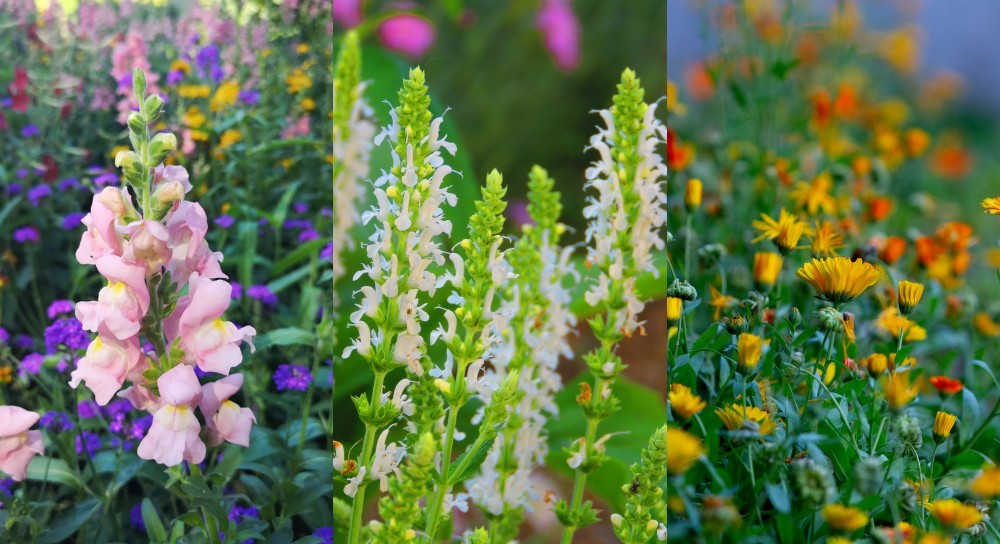
Wondering which plants are worth buying? While price may play a role, it’s the return on your investment that should ultimately determine which plants you choose to grow and which you leave behind at the garden center.
Bargain plants are those that give more than they take – the ones that require minimal input for maximum output.
From fruit trees to wildlife magnets, from multi-purpose plants to healing herbs, here are 18 failsafe options to give you the best bang for your gardening buck.
1. Lavender
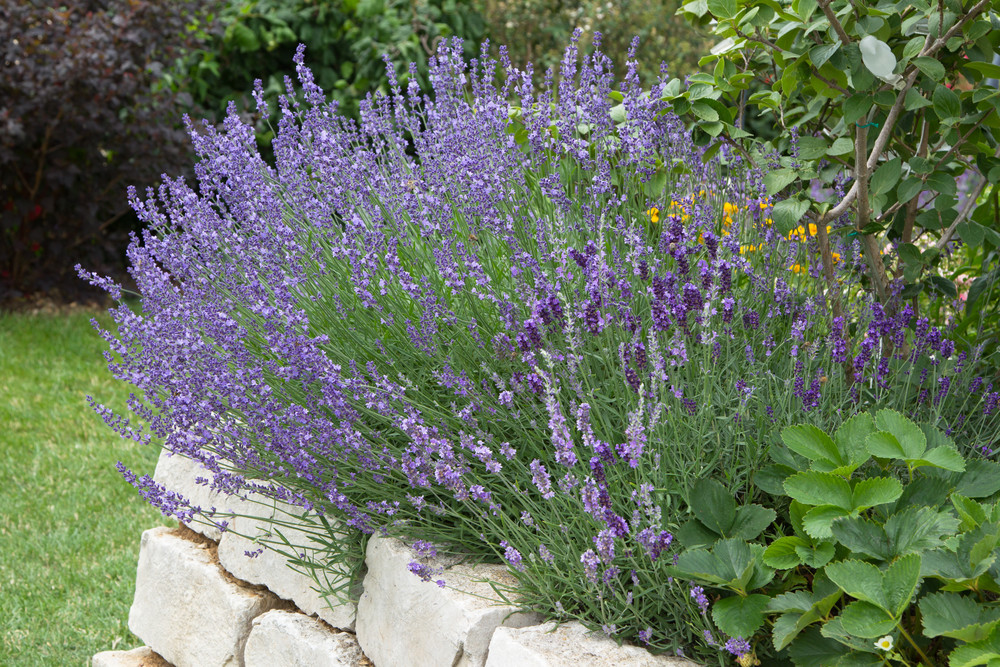
Lavender is a hardy plant that doesn’t require a whole lot of care once established, yet it provides an excellent return on investment.
Lavender is incredibly aromatic and repels mosquitoes, flies, fleas and moths while attracting pollinators to your garden.
You can also use the buds to make your own lavender oil to reduce stress, anxiety, headache, and even improve sleep quality.
The benefits of lavender don’t end there though – it can also be used for beauty, in baking and drinks, around the home and so much more.
2. Apple Tree
Apple trees provide fantastic value for money – especially if grown from seed, although that does require a lot of patience to see results!
Not only do apple trees look great – producing fragrant pink blooms – but they can be trained to bend over arches and along walls.
Of course, you’ll also get the added bonus of fresh organic apples and all the health benefits they bring.
3. Clethra
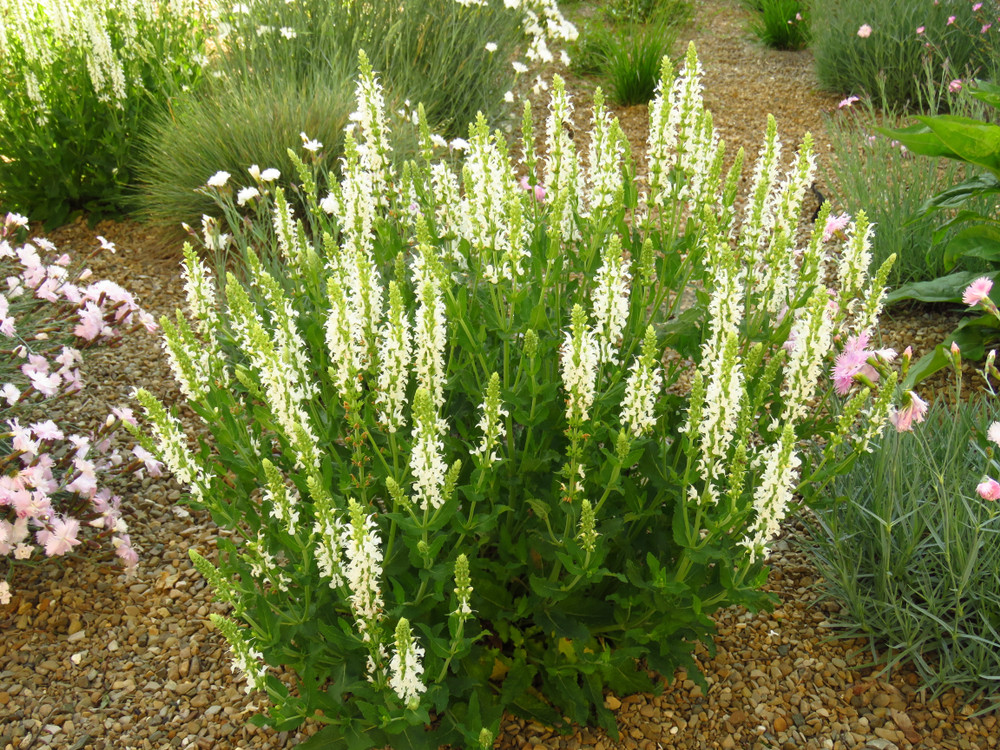
A stunningly fragrant shrub, Clethra are deciduous and evergreen plants with beautiful white flowers and dark green leaves.
Not only will your entire garden smell fantastic thanks to the Clethra, but it should come alive with butterflies and bees.
This plant even blooms well in shady areas making it a great choice for borders and corners.
4. Trailing Nasturtium
One of the best annual flowers to grow, trailing nasturtiums require little care, add fun and color to raised garden beds or hanging baskets, and are edible!
They bloom all season long and even do well in partial shade.
Use their red, orange, yellow and pink petals to garnish salads, risottos, desserts and drinks.
5. Black-Eyed Susan
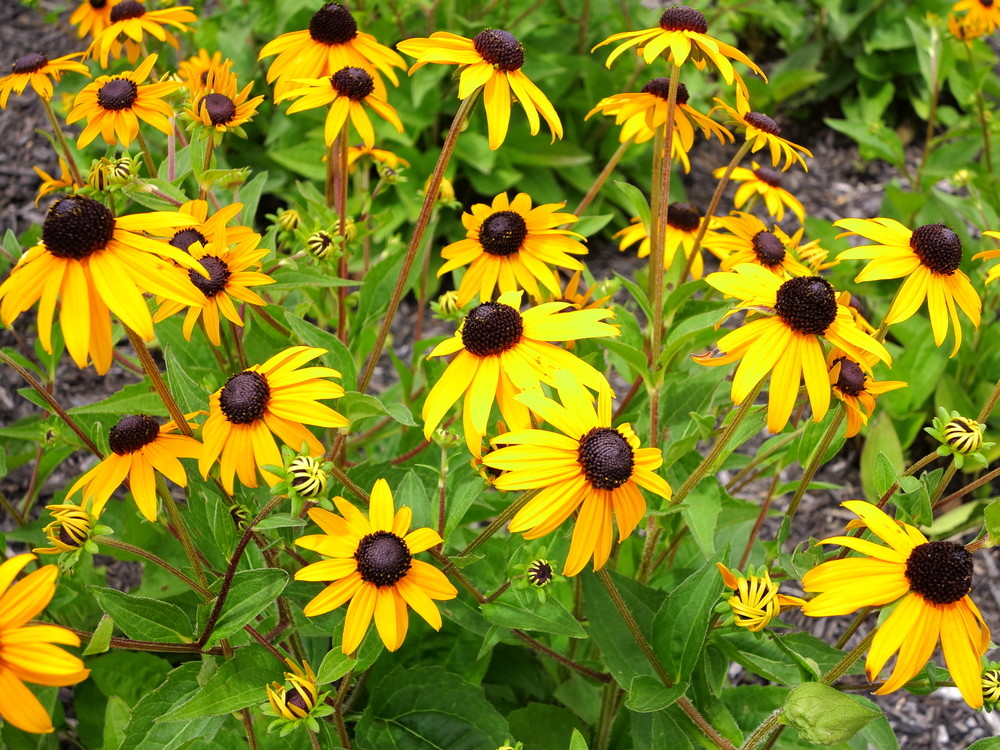
This North American native wild flower is an eye-catching self-seeding perennial, usually boasting beautiful golden leaves contrasted by dark centers.
However, the flowers can also come in bronze, mahogany and red.
These easy to grow golden daisies perform well even in poor soil and dry conditions, and bloom from mid-July through mid-September.
The Black-Eyed Susan is popular with bees and other pollinators.
6. Amaranth
Striking amaranth’s green foliage and deep red flowers make for a dramatic garden focal point or eye-catching filler in floral arrangements.
Use the dried flowers to create a protein-rich and gluten-free flour, benefiting your wallet and your health!
7. Celosia
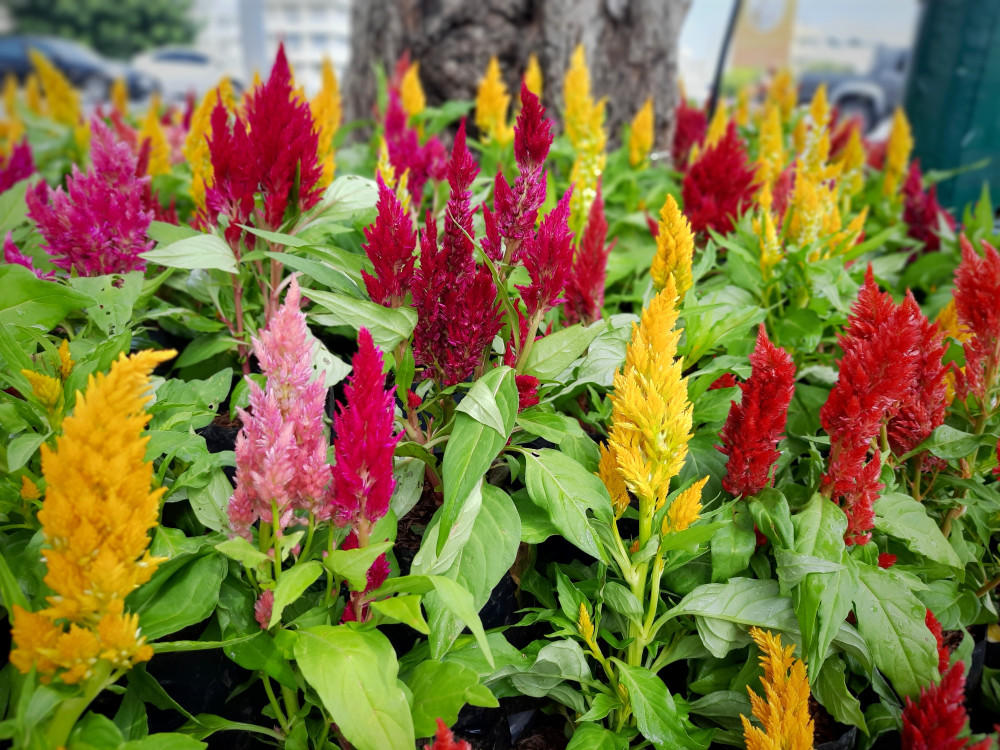
Hardy and vibrant celosia comes in a variety of colors such as red, pink, purple, and gold. When planted next to each other, celosia – meaning ‘burning’ in Greek – resembles fire!
These eye-catching plants grow in any soil, and do best in hot climates as perennials, or elsewhere as annuals. Their flowers can bloom for up to 10 weeks.
It’s also self-seeding so will keep sprouting with no extra effort on your part!
A member of the amaranth family, celosias are also edible.
8. Daylilies
These tough and adaptable perennials return year after year with minimal care. Their bright, six-petaled flowers add color and texture to any garden.
Although some varieties have a very short bloom cycle, none are fussy about soil type; although they like full sun.
What’s more, daylilies are easy to divide in order to multiply so for a small up-front investment you can amass a beautiful collection of colors and shapes in a few short years.
9. Snapdragons
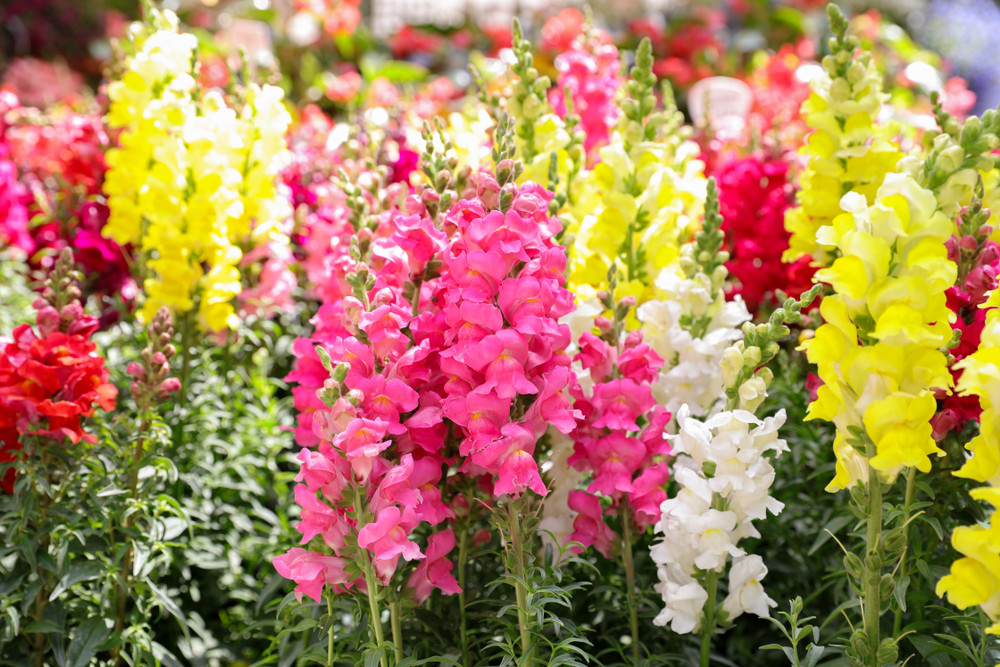
Hardy in all zones, the brightly colored snapdragon is long blooming and comes in over 40 varieties.
Choose a perennial variety to ensure these plants bloom annually.
All will grow well in damp soil, blooming from late summer to early autumn when many other flowers are long gone.
Butterfly lovers will be happy to hear that pretty snapdragons are host food for the larva of the common buckeye.
10. Zinnia
Zinnias are one of the easiest and most inexpensive annual plants to grow, providing a colorful and long lasting addition to any outdoor summer space.
These little flowers come in a multitude of colors and, once established, require little watering.
They do well everywhere – from garden beds and hanging baskets to window pots and balcony containers.
11. Calendula
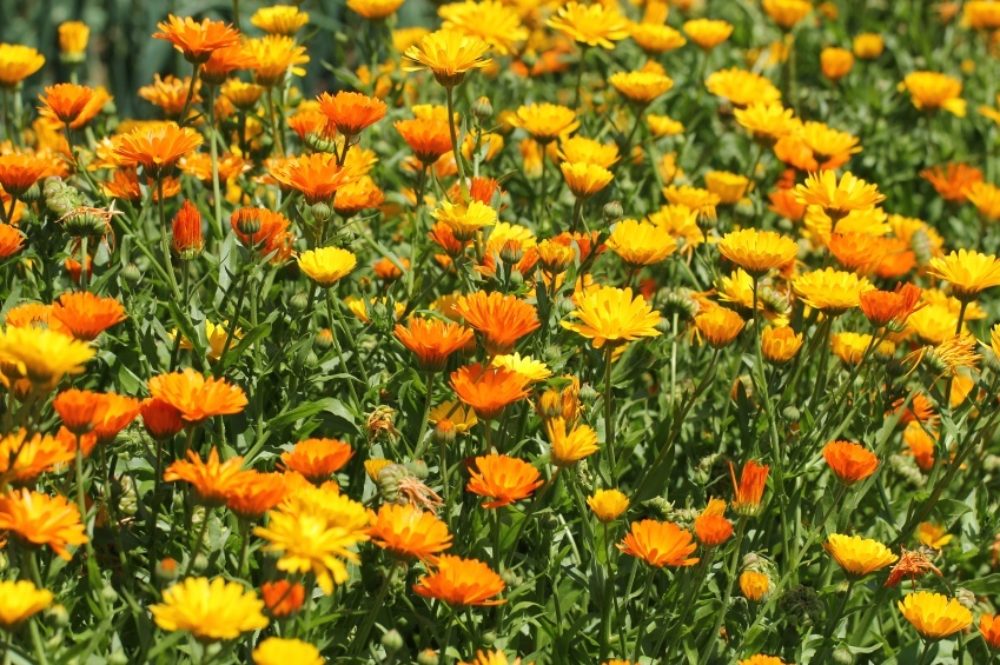
Calendula’s simple beauty and sweet resin-like aroma are complemented by its low maintenance and numerous uses.
It can be utilized in cooking, chicken feed, as a nourishing tea and in this fantastic homemade healing salve to beat eczema, acne and dry skin to name but a few.
What’s more, these annuals bloom constantly throughout the growing season adding color and vibrancy to your garden.
12. Hyacinth Bean
With beautiful light purple blossoms, purple-tinted leaves and red-purple pods, the hyacinth bean plant adds both color and interest to your outdoor area.
Whether the vines are climbing a fence, or the pods are adding an unusual twist to a flower arrangement, this plant is worth the investment.
But this annual vine is not just ornamental, it’s edible too!
Both leaves and beans are very nutritious, but they have to be cooked a certain way to reduce toxins – find out more here.
13. Bee Balm
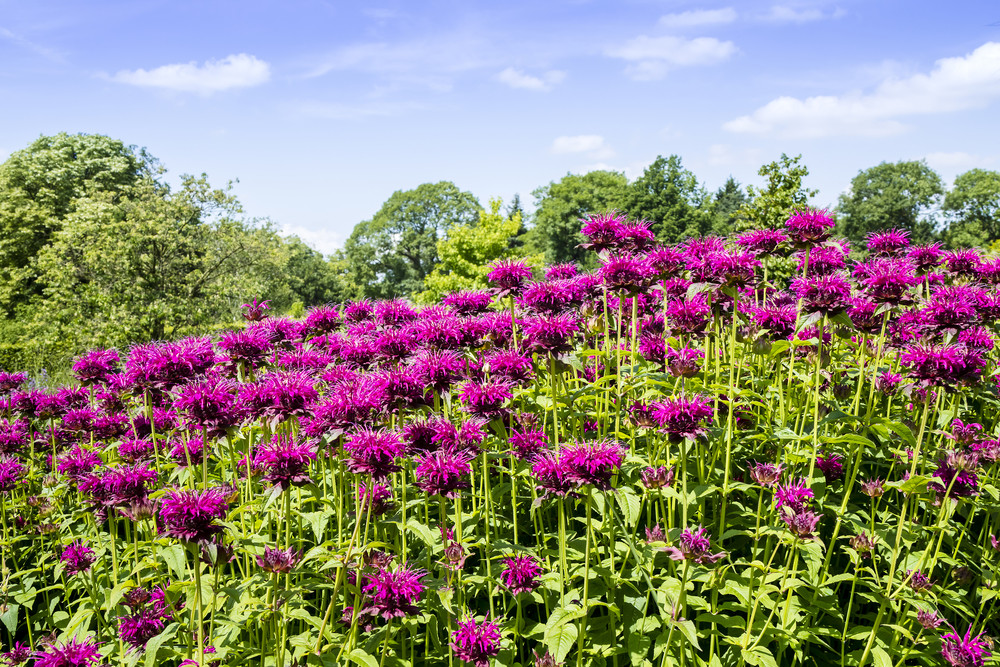
Once you catch a glimpse of the bee balm, you’ll understand why it’s a favorite of the hummingbird – as well as other birds and bees.
Its bright red showy flowers (which also come in pink and purple) have a glorious scent and can cover a lot of ground – perfect for gardeners on a budget.
A native perennial, bee balm thrives anywhere from little to full sun, although it requires moist and rich soil.
Remove spent flowers and prune the plants after the first burst of flowers to encourage another bout.
14. Sunflowers
Nothing says summer has arrived in the garden quite like the appearance of the beautiful sunflower.
This hardy and undemanding plant does well in most soil types, and is generally tolerant to both heat and drought.
Sunflowers attract bees and birds and will provide you with a bounty of seeds that are high in many essential nutrients like Vitamins E and B1, magnesium and selenium.
For extra ‘wow-factor’, choose the Sunzilla variety – it can grow up to an astonishing 16 feet tall while the flowers have a diameter of a foot or more.
15. Aloe Vera
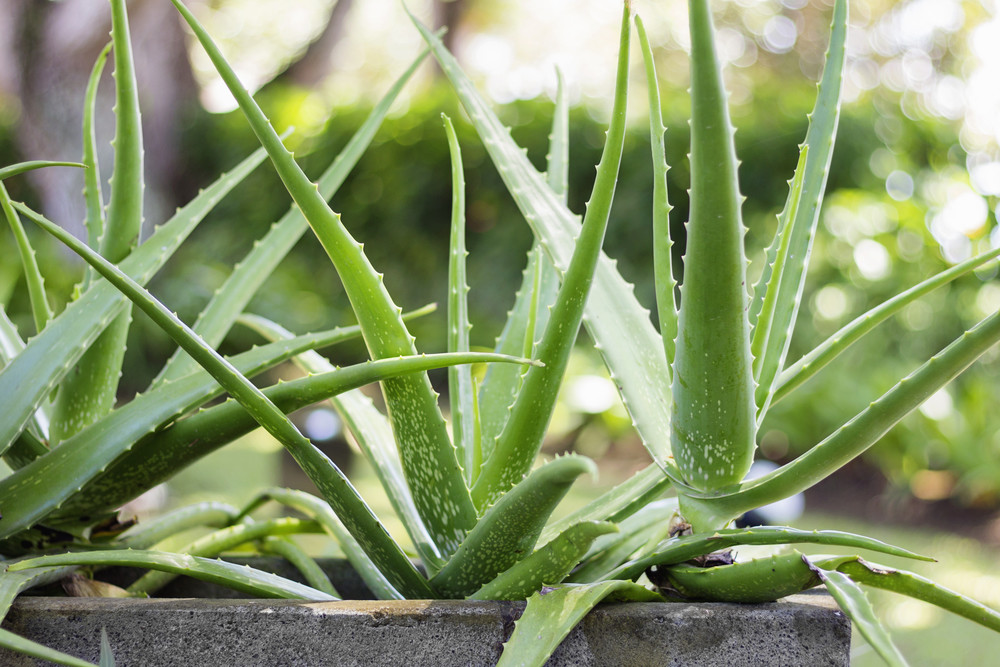
Dubbed the ‘plant of immortality’ by ancient Egyptians because it is so difficult to kill, aloe is an incredibly useful plant to have around the home.
Aloe vera definitely gives more than it takes – its juice is bursting with vitamins and minerals, and promotes healthy digestion; while the gel can be used as a topical treatment for minor cuts and burns, insect bites, dry skin and more.
It’s also one of the top 12 plants to promote a restful slumber.
Because it produces offsets, your initial investment will soon multiply into several plants which you can place around the home or gift to family and friends.
16. Echinacea
Also known as purple coneflower, Echinacea is a bold and beautiful flower. This native plant attracts pollinators to the garden, along with goldfinches.
While it thrives in poor soil and is drought resistant, perhaps one of the most compelling reasons to plant Echinacea is for its medicinal properties.
A tonic of these plants has been used for centuries to boost immunity and ward off colds and flu. You can also make a healing tea with its leaves and flowers.
Being a perennial, this magical plant will reappear year after year without replanting.
17. Evening Primrose
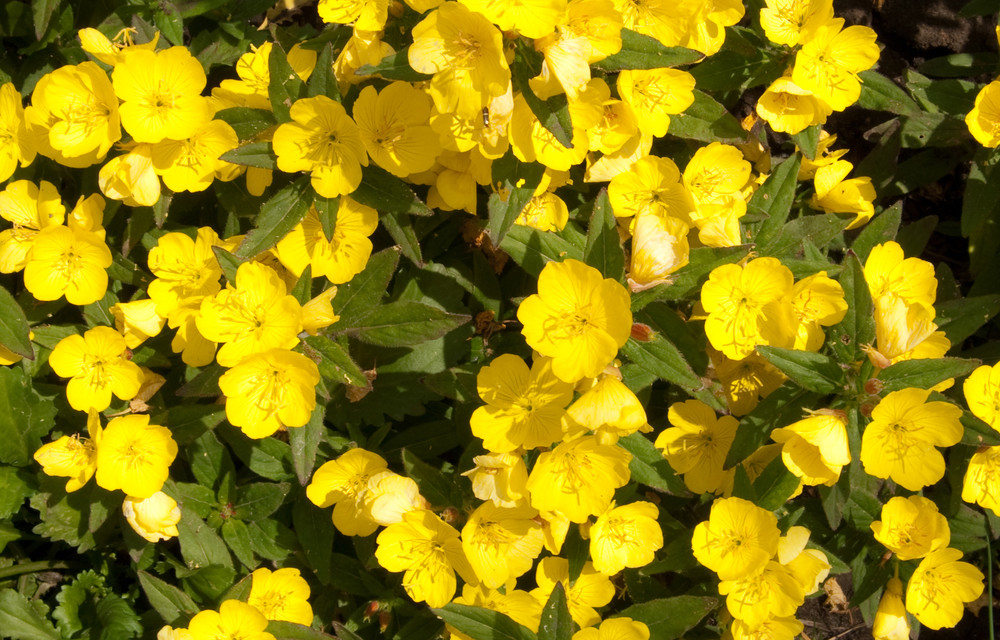
Yellow evening primrose is an adorable native wildflower that does well in almost any part of the US.
If you’re looking to attract more nightlife to your garden, this plant may be for you. Because the delicately scented evening primrose flower blooms only at night, it lures moths to the garden, which in turn attracts hungry bats!
These light yellow flowers, which bloom from May to July, have a wide array of medicinal uses from balancing hormones to easing skin conditions.
All parts if the evening primrose plant can be eaten – from the leaves to the roots!
18. A Variety of Culinary Herbs
No thrifty gardener should forget to plant a variety of culinary herbs in the backyard.
Herbs provide an unparalleled return on investment – and most are incredibly easy to grow.
All herbs add fantastic flavor to food, although some have many uses beyond cooking – such as basil, mint and rosemary.
A kitchen herb garden will fill the backyard with a blend of delicious fragrances while repelling flies, mosquitoes and other garden pests.
And don’t forget that herbs have been used for millennia for their healing properties so they can keep you in tip-top health and save on doctors’ bills. What more could you ask for?
